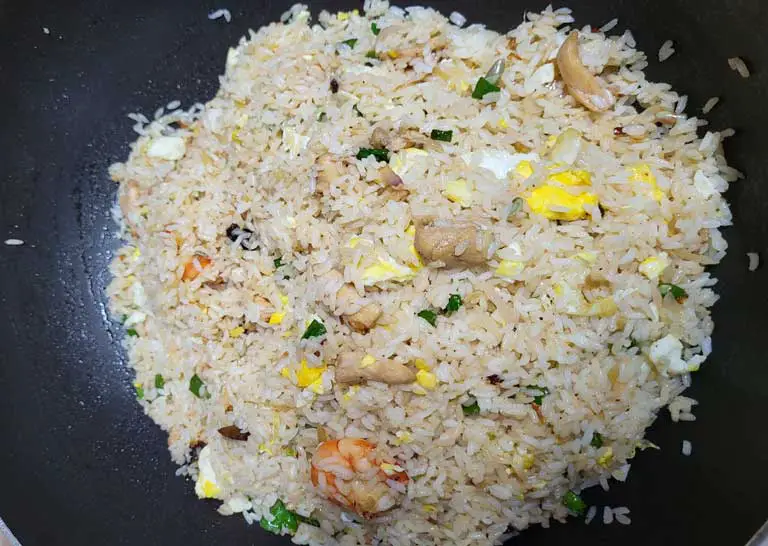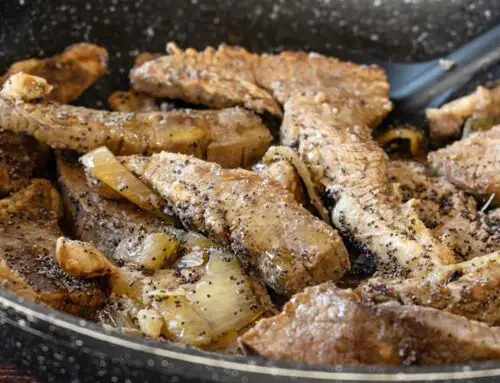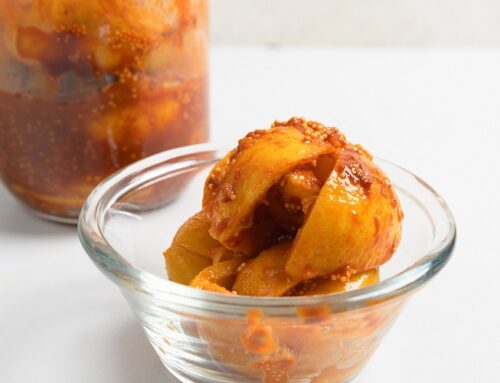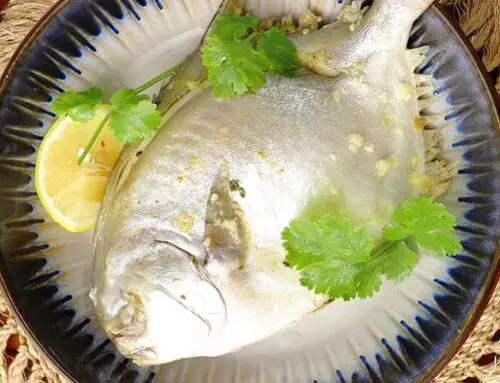I love fried rice. So much so that it is one of the only few items I tried to make prior to my cooking sessions. But what I made for a late night snack was a really simplified version of fried rice.
What I would do is take a frying pan or any pot, pour oil, crack an egg open and fry it. Then I would add plain boiled rice (leftovers from dinner) to the pan. Then I would stir and add whatever sauce I felt like. Oh and, like me, do not forget the salt. Forgetting to add salt was so common that I would usually use soy sauce just to avoid adding salt.
If I was lucky I would find some chopped vegetables in the fridge and I’d fry those as well before adding the rice. Sometimes I would hit the jackpot and find some canned tuna or mushrooms. And I did experiment with a few random items (ie black olives, not recommended) but usually that’d end in a disaster.
Now going from that fried rice to actual Thai fried rice is quite a step up to say the least. And my main takeaway from this cooking venture was that Bengali people have to spend way more time in preparing the ingredients, the main cooking is short and simple enough.
Canned food is still catching up in Bangladesh, we like our ingredients fresh and prepared ourselves. Regular visits to bazars are done to keep the fridge topped up with fresh veggies. So the cooking process for us technically starts at a bazaar, gathering ingredients. And that is exactly what happened to me.
There was no Barbati (French Bean or String Bean) in the fridge so I had to go and buy some. Then come back home, wash them, and chop them. Fortunately the other ingredients were already prepared by my mother so I basically skipped the toughest part.
Now, speaking of ingredients, I always wondered what made Thai fried rice different? Fried rice is generally considered to be a Chinese food, so what made Thai fried rice so special? And is what I am making even “Thai” since most of the ingredients were more commonly used in Bengali cuisine.
A quick google search and a visit to wikipedia told me everything I needed to know. The main difference is in the rice that is used. Thai fried rice uses Thai jasmine rice, and the original Chinese fried rice is generally prepared with regular long-grain rice. Both types of fried rice have meat, egg, onion, garlic, tomatoes and other common veggies in them. But traditional Thai fried rice did not use soy sauce as it is a Chinese ingredient. Thai fried rice is more commonly prepared with fish oil, a more flavorful ingredient.
Cross checking what I found out about Thai fried rice ingredients with the ingredients I was using, it was pretty easy to conclude that I was in fact not making Thai fried rice. The main ingredient itself, the rice, does not match that of the original dish. Even though the dish I am preparing is commonly called Thai fried rice in Bangladesh, calling it Bangla Thai fried rice would be much more accurate.
Thai or not, what I prepared in the kitchen was actually delicious. I had all my friends try it just to be extra sure.
And as mentioned, the recipe is quite simple to execute. But that being said, there are ways for one such as me to mess up. Adding fresh vegetables to fry at the same time as onion is not a good idea, as pointed out by my mother. Onion takes a while longer to fry, so if veggies and onion are put on the frying pan together, either the veggies may get burnt or the onion might stay raw.
And absolutely do not forget to add salt. And sugar.
Ingredients
- 250 grms polao rice
- 1 pc tomato
- 3/4 cups cooking oil
- 2 eggs
- tasting salt to taste
- 1/2 cup chicken
- 1/2 cup barbati
- 1/2 cup prawn
- 1/2 cup piyajer koli Onion Flower
- 3/4 cup onions chopped
- 1/2 tbsp black pepper
- salt to taste
- 2 tbsp sugar
- 1 tbsp fish sauce
Instructions
- Cook the rice.
- Cover the chicken and prawn in a thin layer of egg.
- Lightly fry the onion in a pan. Then add the chicken and prawn to the pan.
- Then add the barbati to the pan.
- Add the egg followed by the rice to the pan.
- Add the rest of the ingredients and stir until ready.
Nutrition






